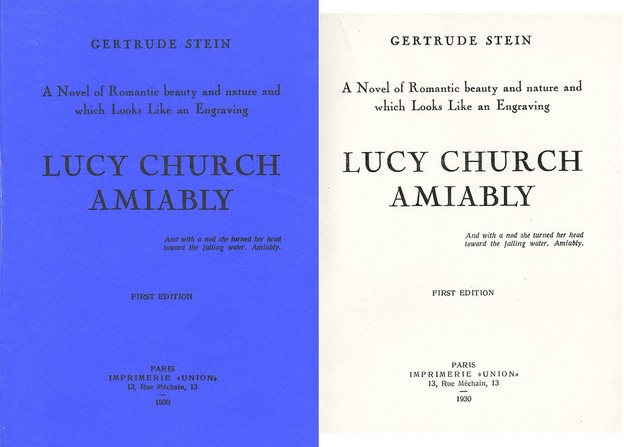Editions and additions
Gertrude Stein and the iterations of the book

In our digital age, the printed book is often seen as resisting the immateriality and inauthenticity of the digital text through its “aura,” “singularity,” “authenticity,” “materiality,” and “bookness”––to cite some key terms from a conference on the future of the book that I attended last year. Even book versions that sit alongside versions in other media––what Marjorie Perloff terms “differential texts”––seem to stress the differences between the book and digital media and so each medium’s materiality.
Yet in a range of poetic practices developed in response to the age of mechanical reproduction and to our digital age, the book becomes a site for exploring––rather than resisting––reproduction and iteration. In the final posts in my “Iterations” commentary, I want to focus on the dual role of the book as both material object and copy, beginning with the work of modernists such as Walter Benjamin and Gertrude Stein before turning to some recent iterative texts that challenge the commonplace contrast between the singularity of the print and paper book object and the repeatability and mutability of the digital text.
The rise of new technologies of mechanical reproduction in the modernist period heightened attention to the book as copy, both in terms of the aura and materiality of the individual copy and as a reproduced non-original object. Gertrude Stein played with these two possible ways of looking at the book through her own press, the Plain Edition, which she used to publish a number of her works in the 1930s. Stein foregrounds the copying, or iterations, involved in the published book in her description of the project, which appeared at the beginning of the first volume in the series, Lucy Church Amiably:
The plain Edition
an Edition of first Editions
of all the work not yet Printed
of Gertrude Stein
This description of the Plain Edition links the copying involved in the mechanical reproduction of printing to Stein’s iterative technique. As Stein wrote not long afterwards, “there is no such thing as repetition,” only “insistence.” The repetition of “Edition” functions both to insist on the importance of these “first Editions” and to stress that each edition is one among a series of copies open to potentially infinite duplication, as marked by the telescoping role of the repeated preposition “of.” Each instance of the words “Edition” and “of” is mechanically reproduced through the repetition of letters in the same font. Stein thus links the additive, insistent nature of language to the additive, insistent process of book production and reproduction.
Stein also emphasized the poetics of the copy in the design of Lucy Church Amiably. As Sarah Stone has pointed out, Stein designed the book to look like the cheap blue copybooks in which she often drafted her work. Stein also described the book in the subtitle as looking “like an Engraving,” and, as Stone notes, punned on this idea by selecting the Cochin font for the book––a font named after the eighteenth-century engraver Charles-Nicolas Cochin. In this context, the exact repetition of the same printed text and layout on the blue cover and white title page also becomes more marked. All these decisions present the book as a site of reproduction, even as Stein’s writing itself stresses the reiterations of words and phrases.
Nor is this an isolated example. Stein also clearly connects her use of language to the process of print reproduction in her famous seal with the circular “rose is a rose is a rose is a rose” design. Through this seal, Stein links the potentially infinite production of print copies to the potentially infinite repetitions of language.
Iterations